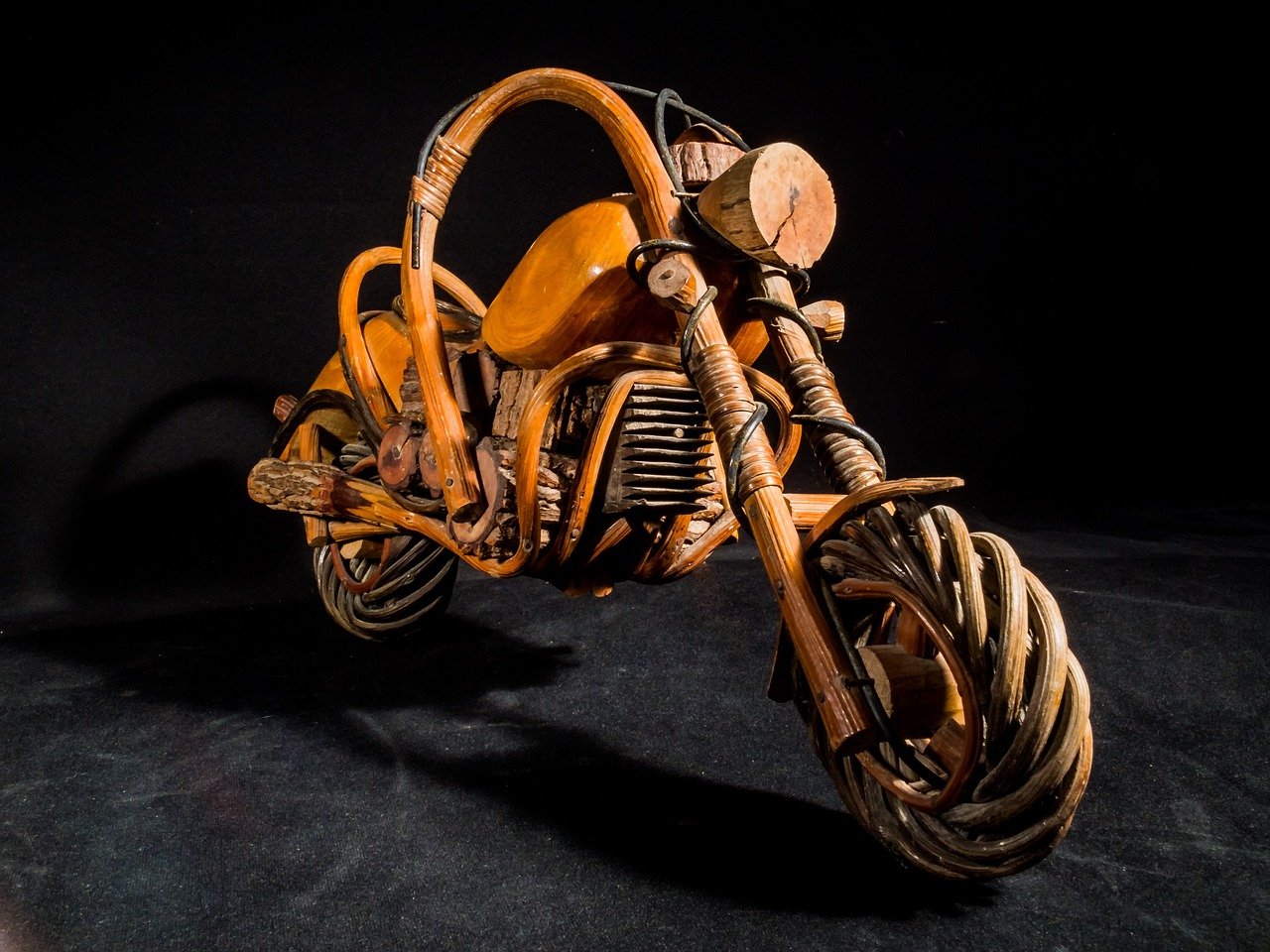Introduction
In the world of art, where visual elements often dominate, the crock knot wood carving emerges as a tactile wonder that invites both touch and eye. Originating from the Appalachian trail in Pennsylvania, this unique art form not only captures the rugged beauty of nature but also transforms it into a sculpture that demands interaction. The crock knot isn’t just a showcase of skilled craftsmanship; it’s a celebration of tactile experiences in art. This blog post will guide you through the intricate process of creating such masterpieces, the significance of each step, and the undeniable allure of presenting them with custom stands.
The Art of Crock Knot Wood Carving
Detailed Process of Carving a Crock Knot
Creating a crock knot is a meticulous process that transforms a natural pine knot into a breathtaking piece of art. The artist begins by selecting a suitable pine knot from the Appalachian trail, ensuring it has the necessary density and texture for carving. The initial step involves carefully sketching the design onto the wood, keeping in mind the natural grain and imperfections that can add character to the piece. With chisels and knives, the artist carves away layers of wood, slowly revealing the intricate forms hidden within. Each cut is deliberate, guided by an intimate understanding of the medium, until the final shape of the crock knot emerges.
Tools and Techniques Used in Wood Carving
Wood carving is an ancient art that requires a blend of traditional tools and modern techniques. Among the essential tools are various chisels, each designed for specific types of cuts, from gouges for creating curves to V-tools for detailing. A mallet aids in applying controlled force, while sandpaper is used to smooth the finished surface. Beyond tools, carving demands patience and precision. Artists often employ techniques such as relief carving, where the design is raised above the background, and deep carving, which requires careful removal of wood to create depth.
Significance of Using Appalachian Trail Pine Knots
The Appalachian trail offers more than just breathtaking views; it provides artists with pine knots that are imbued with history and resilience. These knots are formed over years of growth, resulting in dense, durable wood perfect for carving. The natural patterns and colors within each knot tell stories of the tree’s life, offering a unique canvas for artists. By using these pine knots, the crock knot not only becomes a representation of artistic skill but also a tribute to the natural world.
Custom Turned Stand Enhancing Presentation
The Creation of a Custom Turned Stand for the Crock Knot Carving
Displaying a crock knot requires more than just placing it on a shelf; it deserves a pedestal that complements its artistry. The creation of a custom turned stand involves selecting a wood type that harmonizes with the carving. The stand is meticulously crafted on a lathe, where the artist shapes and refines the wood into a base that elevates the sculpture. The design often includes intricate details, such as decorative edges or grooves, adding to the overall aesthetic. This turned stand not only supports the sculpture but also enhances its visual appeal, inviting viewers to admire it from every angle.
The Artist’s Inspiration and Design Process
Every stand begins as a concept, inspired by the artist’s vision for how the crock knot should be displayed. The design process is driven by the desire to create a stand that seamlessly integrates with the sculpture, enhancing its beauty without overshadowing it. The artist considers factors such as size, balance, and material compatibility. Sketches and prototypes are developed, allowing for experimentation with different shapes and finishes. The final design reflects the artist’s interpretation of the sculpture’s essence, offering a harmonious union between stand and carving.
Importance of Presentation in Sculpture
Presentation plays a crucial role in how art is perceived and appreciated. A well-crafted stand transforms a sculpture from an object into a centerpiece, drawing attention and encouraging interaction. It allows the artwork to occupy space gracefully, inviting viewers to explore its details. In the case of tactile art like the crock knot, the stand provides accessibility, enabling the audience to engage with the sculpture physically and visually. This interaction enriches the viewer’s experience, fostering a deeper connection with the art.
The Experience of Tactile Art
The Role of Tactile Art in Engaging the Senses
Tactile art transcends the visual realm, inviting the audience to experience it through touch and movement. Unlike traditional 2-dimensional art, tactile sculptures like the crock knot engage multiple senses, offering a holistic experience. Touch enhances understanding, allowing viewers to feel the texture, weight, and temperature of the piece. This sensory engagement creates an emotional connection, making the art more memorable and impactful. Tactile art challenges the notion of passive observation, encouraging active participation and exploration.
How Handling and Moving Sculptures Change the Viewing Experience
Interactive art transforms the audience from passive observers into active participants. By handling and moving a sculpture, viewers gain new perspectives, noticing details and nuances that may be overlooked in a static display. This dynamic interaction offers a sense of discovery, as the artwork reveals different facets with each movement. The ability to manipulate the piece fosters a personal relationship between the viewer and the art, enhancing appreciation and understanding. In the case of the crock knot, such engagement emphasizes the craftsmanship and thought behind every curve and contour.
Insights from the Wood Carving Community and Art Enthusiasts
The wood carving community values the tactile nature of sculptures, recognizing the unique connection it fosters between art and audience. Enthusiasts appreciate the opportunity to engage with art on a physical level, finding joy in the textures and forms that cannot be captured through sight alone. This interaction encourages dialogue and shared experiences, as viewers discuss their impressions and interpretations. The crock knot serves as a testament to the power of tactile art, inspiring both artists and collectors to explore this rich dimension of creativity.
The Business of Art Commissioning Sculptures
The Demand for Custom Wood Carvings and Sculptures
In today’s art market, there is a growing demand for custom wood carvings and sculptures that offer personalized, meaningful expressions. Collectors and enthusiasts seek pieces that reflect their tastes and interests, valuing the uniqueness and craftsmanship that bespoke art provides. Artists like those who create crock knots offer tailored experiences, working closely with clients to bring their visions to life. This demand has opened new avenues for artists, allowing them to showcase their skills while meeting the desires of their patrons.
The Artist’s Process for Commissioned Works
Commissioning a custom sculpture is a collaborative process that begins with understanding the client’s vision. The artist engages in discussions to grasp the desired theme, size, and style of the piece. Sketches and proposals are developed, outlining the concept and materials to be used. Throughout the creation process, the artist maintains communication, providing updates and seeking feedback to ensure alignment with the client’s expectations. This partnership culminates in a finished sculpture that embodies both the client’s vision and the artist’s expertise.
How to Contact the Artist for Bespoke Wood Carvings
For those interested in commissioning a custom crock knot or other wood sculptures, reaching out to the artist is the first step. Most artists have websites or social media profiles where they showcase their portfolio and contact information. Prospective clients can send inquiries, detailing their ideas and preferences. It’s important to discuss timelines, budget, and any specific requirements to ensure a smooth collaboration. Building a relationship with the artist is key, as it fosters mutual understanding and trust, resulting in a successful and satisfying artistic partnership.
SEO Keywords and Their Importance
Explanation of the Focus Keyword Crock Knot and Its Significance
The term crock knot is more than just a descriptor; it’s a focus keyword that captures the essence of this unique art form. In the realm of SEO, keywords play a vital role in connecting content with audiences interested in specific topics. By targeting the keyword crock knot, this blog post aims to reach individuals who seek information and inspiration related to this particular style of wood carving. The significance lies in its ability to attract the right audience, ensuring that the content resonates with those who value and appreciate this art.
Importance of SEO for Artists and the Wood Carving Community
Search Engine Optimization (SEO) is a powerful tool for artists and the wood carving community, enabling them to enhance their visibility and reach. In a digital age where most people turn to search engines for information, optimizing content with relevant keywords ensures that artists’ work is discoverable by potential clients and enthusiasts. By strategically incorporating keywords like crock knot, artists can connect with individuals who share their passion, driving traffic to their portfolios and increasing opportunities for commissions and sales.
Strategies for Using SEO to Enhance Visibility and Sales
To maximize the benefits of SEO, artists should adopt a multi-faceted approach that includes keyword research, content creation, and online engagement. Identifying relevant keywords and phrases that align with their art form is the first step. Creating high-quality content, such as blog posts, tutorials, and galleries, helps to establish authority and attract visitors. Engaging with audiences through social media and online communities fosters connections and keeps the artist’s work top of mind. By leveraging SEO, artists can expand their reach, build their reputation, and ultimately increase sales.
FAQs
What is a Crock Knot?
A crock knot is a type of wood carving that involves shaping pine knots into intricate sculptures. These knots, sourced from the Appalachian trail, are revered for their density and natural patterns, making them ideal for creating tactile art.
How is a Crock Knot Carving Made?
Creating a crock knot carving involves using chisels and knives to meticulously shape the wood. The process begins with sketching the design, followed by careful carving to reveal the final form. Each piece is a unique expression of the artist’s skill and vision.
Why are Appalachian Trail Pine Knots Used?
Appalachian trail pine knots are used for their durability and rich history. These knots are formed over years, resulting in dense wood with unique patterns and colors. Artists value them for their natural beauty and the stories they tell.
Can I Commission a Custom Wood Carving?
Yes, many artists offer commissioned services for custom wood carvings. This collaborative process involves discussing the client’s vision, developing sketches, and creating a bespoke sculpture that reflects both the client’s desires and the artist’s expertise.
How Do I Contact the Artist?
To commission a custom piece, reach out to the artist via their website or social media. Provide details about your vision and preferences, and discuss timelines, budget, and requirements to ensure a successful collaboration.
YOU MAY ASLO LIKE
Explore the Mollar CGT 20750 Drawing Tool for Artists and Designers
Conclusion
The crock knot wood carving, with its tactile allure and intricate craftsmanship, stands as a testament to the power of art to engage and inspire. From the initial carving of Appalachian pine knots to the creation of custom stands, every aspect of this art form is a celebration of creativity and skill. For art enthusiasts, collectors, and the wood carving community, the crock knot offers a unique opportunity to explore tactile art and commission personalized pieces. By harnessing the benefits of SEO, artists can continue to share this exceptional art with the world, inviting others to experience its beauty firsthand.











